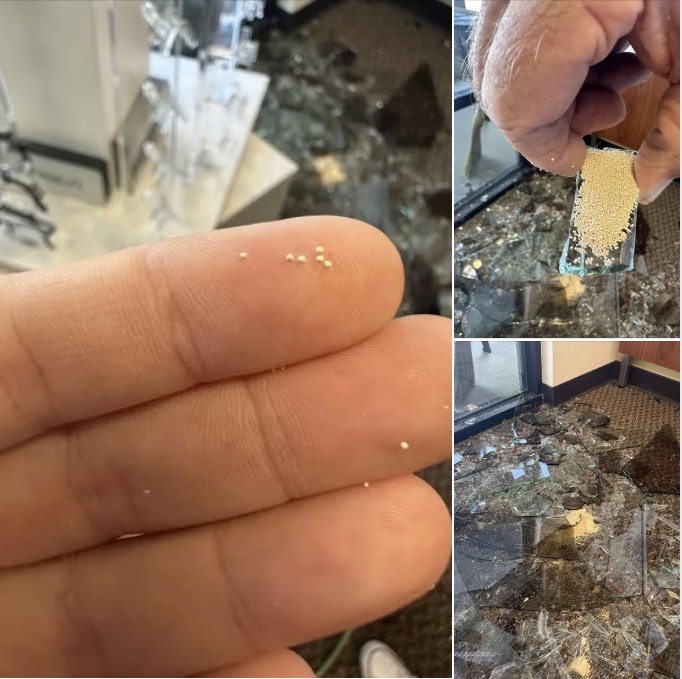When burglars broke into my wife’s office, we expected the usual mess—broken windows and missing items. What surprised us was the discovery of tiny cream-colored beads scattered among the shattered glass on the floor. At first glance, they looked like some kind of grain, maybe millet or couscous, which only added to our confusion.

Even the police who came to investigate didn’t know what these beads were. Not wanting to take any chances, we handed them over to the authorities. Later, we learned the truth—and it was far less mysterious than we had imagined. Those little beads weren’t left by the burglars; they were actually part of the window itself.
The beads came from the metal spacer inside a dual-pane window, also called an insulated glass unit. These windows have two glass panes separated by a metal frame that holds tiny moisture-absorbing beads known as desiccants. Their job is to soak up any moisture trapped between the panes, preventing fog or condensation that can blur your view.
When the burglars smashed the window, they not only broke the glass but also damaged the metal spacer, causing the desiccant beads to spill out onto the floor. What looked like a strange clue was simply the window’s moisture control system doing its job until it was broken.
These desiccant beads are commonly made from materials like silica gel or zeolite and are designed to keep the space between the panes dry, improving insulation. Although non-toxic, it’s important to clean them up quickly since curious kids or pets might mistake them for food.
What caught us off guard was how we initially thought the beads were some kind of evidence left behind by the intruders. Instead, they were just a normal part of modern window construction—something most people don’t even know exists.
So, if you ever find tiny beads mixed with broken glass, don’t jump to conclusions. They’re likely just the desiccant from a shattered insulated window, a simple but clever design feature that helps windows perform better in all kinds of weather.
